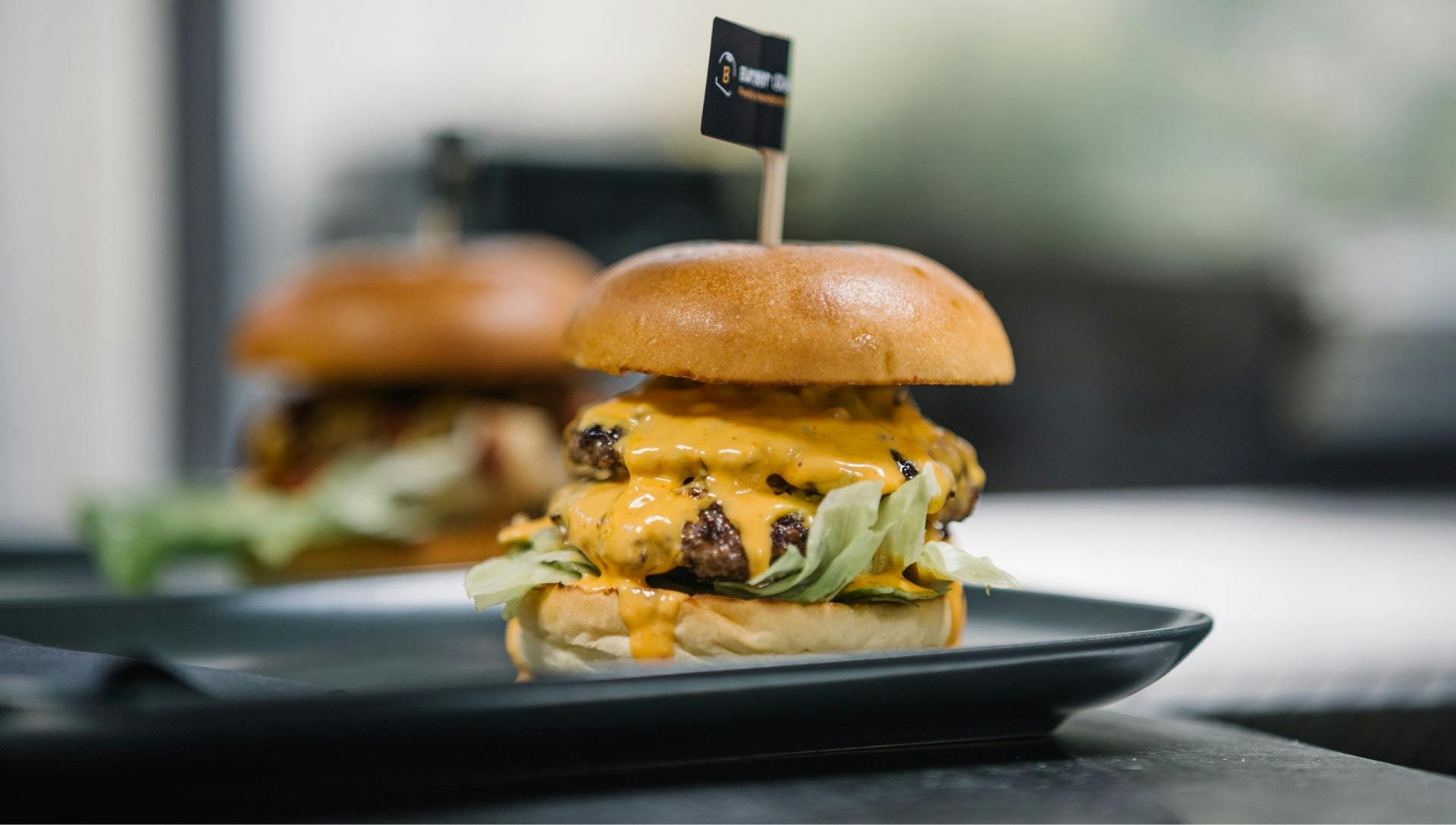
This is a complete list of current online food delivery statistics and trends from around the world.
Food delivery is the new "normal," and the data behind it is fascinating. While initially boosted by the restrictions of COVID, it continues to grow and shows no signs of declining to pre-pandemic levels.
But just how big is the online food delivery market? And why and how are people ordering in? Read on to discover all the key online food delivery statistics in 2023 and beyond.
We'll cover:
- Food delivery market size statistics
- Food delivery consumer behaviour statistics
- Statistics on food delivery services (aggregators)
- Statistics on food delivery versus dine-in
- A closer look at the UK food delivery market
Food delivery market size statistics
Nearly one-third of people order meals online (Statista)
- How many people order food online? User penetration in the meal delivery segment will be 27.4% in 2023 and is expected to reach 33.33% in 2027.
- This means that 2.64 billion people will order meals online by 2027.
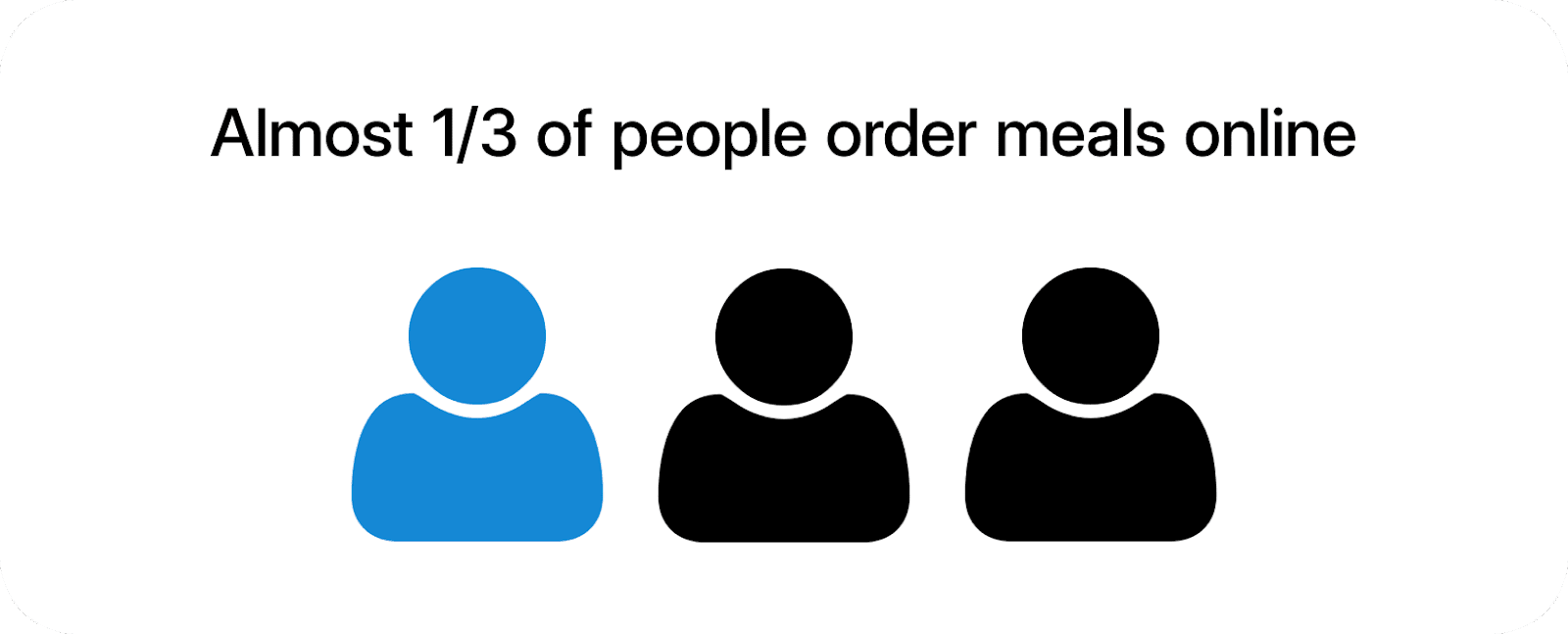
Food delivery is in high demand after the pandemic (Kantar)
- Food delivery penetration has increased everywhere in the world compared to 2020. However, penetration is higher in some places than others.
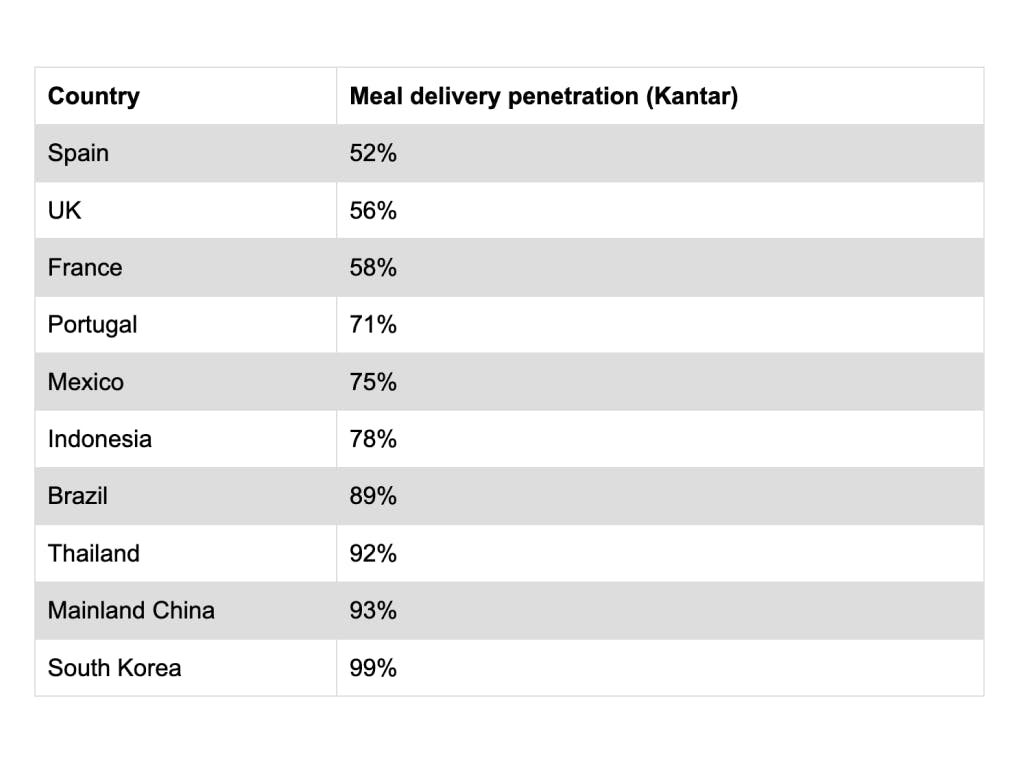
Revenue in the meal delivery segment is growing, especially in China (Statista)
- Revenue in the meal delivery segment is expected to reach $247.30 billion in 2023. Most of this revenue will come from China ($151,800.00 million).
- Revenue will continue to grow by 6.72% each year, reaching $450.30 billion in 2027.
- The average revenue per user, i.e. the money generated by a single customer, is expected to be $165.20.
Food delivery consumer behaviour statistics
People are ordering more and more frequently, but this varies greatly from country to country (Kantar)
- In countries like South Korea and Thailand, people order food delivery once a week.
- In mainland China, Brazil, and Indonesia, people order food delivery once every two weeks.
- In Mexico and in European countries such as Spain, France, the United Kingdom, and Portugal, where in-person dining is more popular, people order food delivery every three to four weeks. This means there is still room for growth in these markets.
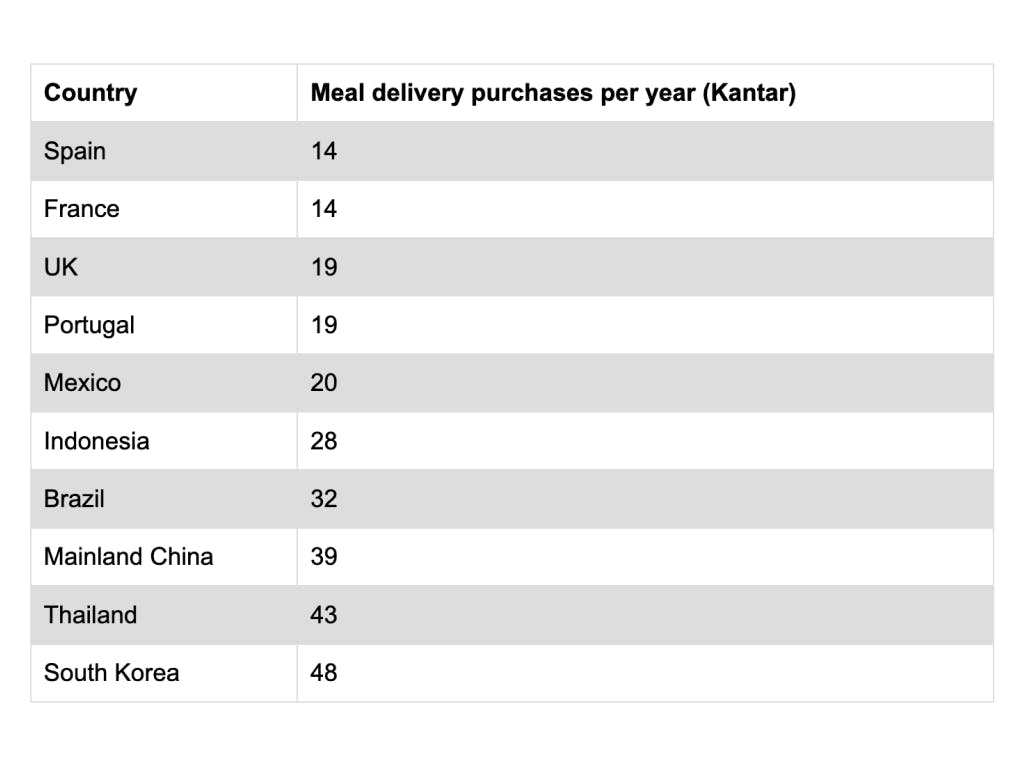
There is a new segment for food delivery: Frequent shoppers (Kantar)
- One segment that is growing globally is heavy buyers. Heavy users are those who order a meal once a week or more. Compared to 2020, this group has grown by 54% in Asia, 66% in Latin America, and an impressive 114% in Europe.
- 40% of users in Asia order food delivery once a week or more. In Latin America, the figure is 25%, and in Europe 15% of users order frequently.
- What else is there to know about frequent orderers? They prefer to order from food delivery aggregators (66% do so rather than ordering directly from a restaurant) and take advantage of promotions (75% buy with discounts or loyalty programmes).
Convenience is the top reason for ordering food online (Kantar)
- 55% of consumers say convenience is the main reason they order food online, while 45% say they do so as a reward or treat.
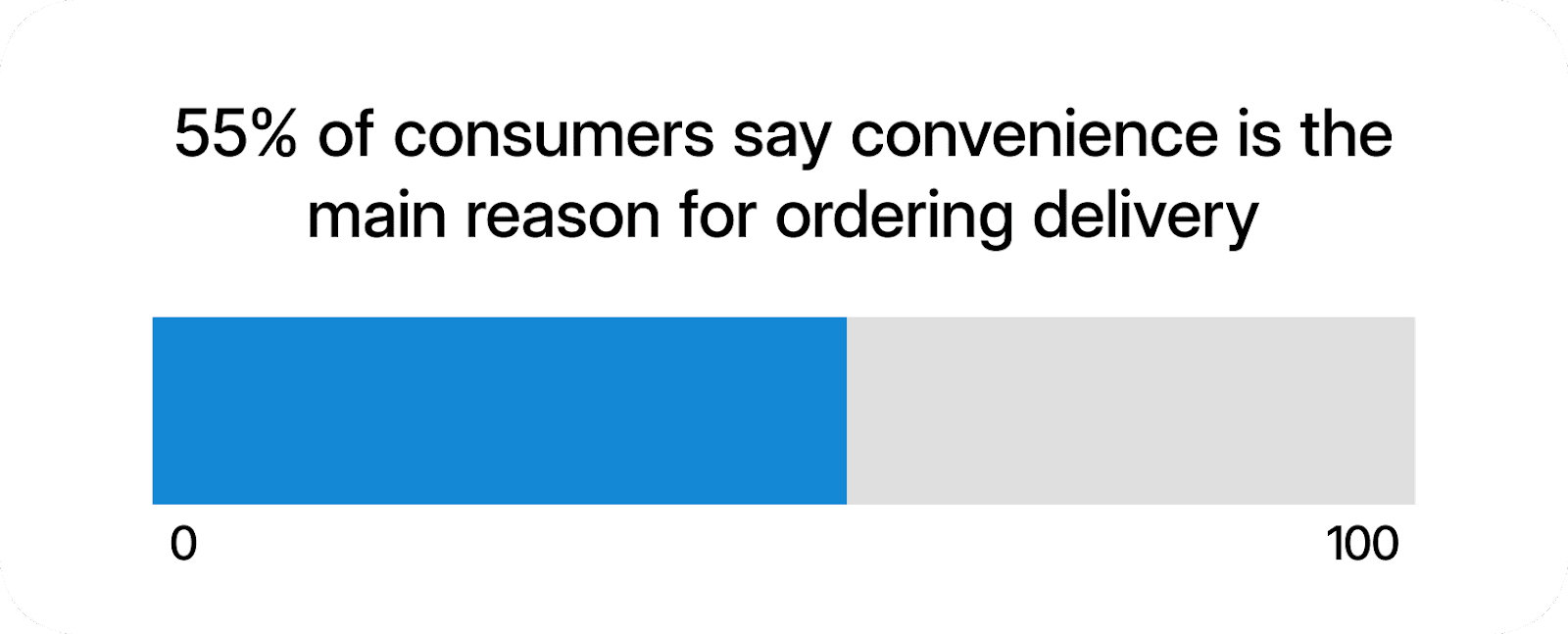
- In countries such as Portugal, Spain, South Korea, and Thailand, the percentage of "convenience" as the main reason for ordering food is over 60%.
- This increase in "convenience" as an answer, up from 41% in 2020, is a clear sign of the shift in mentality around food delivery.
- Examining the exact reasons for ordering food online, the top reason is "can't be bothered to cook" (25%), followed by "prefer to stay at home rather than visit a restaurant" (15%).
Promotions drive delivery sales (Kantar)
- A discount on the ticket is the most popular promotion among users of food delivery platforms: 50% of users say this is a reason to order food.
- Other popular promotions include: no delivery fees (45%), multi-buy such as 2x1 (35%), and meal deals that include drinks or sides (25%).
Western food is most often ordered on delivery platforms (Kantar)
- What is the most common food ordered online? 47% of diners using delivery platforms order Western food (e.g., pizza, burgers), 35% order East Asian food (e.g., Chinese, Thai, Japanese, and Korean), and 18% order other international food such as Mexican and Indian.
- Looking at the different types of restaurants, quick-service restaurants are by far the most popular and most dependent on food delivery. Two-thirds (67%) of the total revenue of quick-service restaurants comes from food delivery and pickup, while 33% comes from eat-in sales.
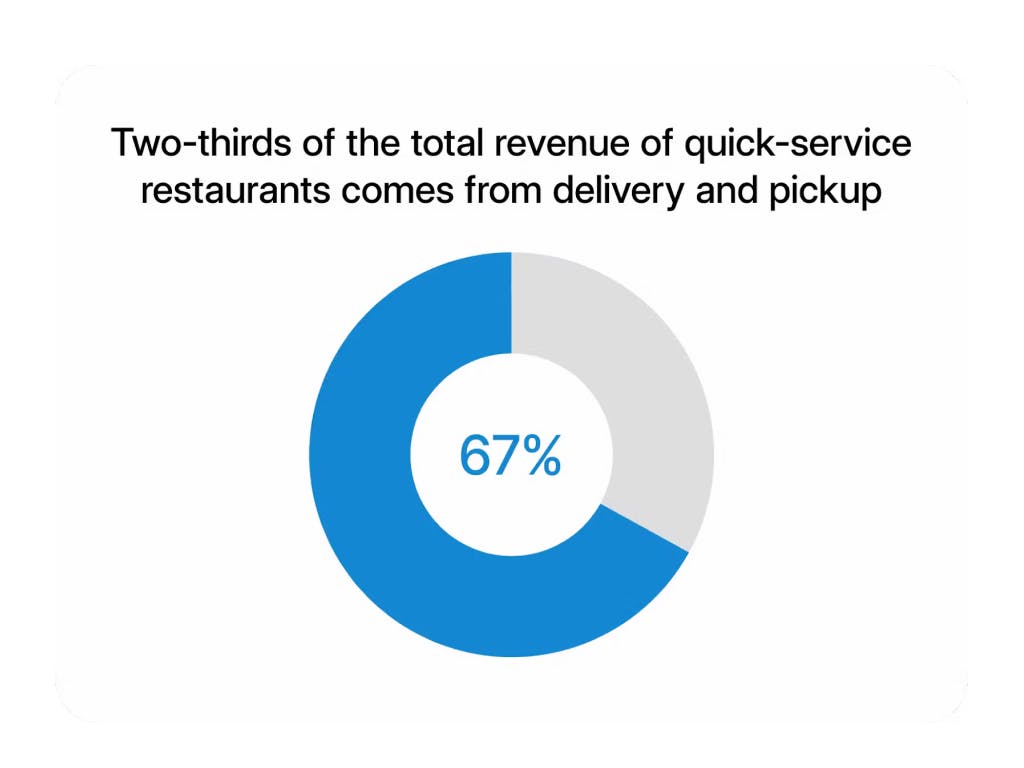
Food delivery aggregator statistics
Food delivery platforms are the most popular way to order meals (Kantar)
- The market penetration of aggregators such as Uber Eats, Just Eat, and Deliveroo has increased since 2020 and now accounts for more than half of all deliveries.
- Looking at individual countries, 67% of UK meal delivery customers order through aggregators, compared to 60% in Portugal, 60% in Spain, 55% in Brazil, 51% in France, and 40% in Mexico.
- The popularity of delivery platforms is highest in Asia, where over 80% of all meal delivery buyers use aggregators.
- The top delivery services vary by country, with Uber Eats and Just Eat leading the way in the UK.
Delivery Hero, Just Eat and Uber Eats are the top apps for food delivery (Business of apps)
- Delivery Hero, with subsidiary brands such as Glovo in Spain, PedidosYa in Latin America, Talabat in the United Arab Emirates, and foodpanda in Asia, has the most active users with 118 million.
- It's followed by Just Eat (90 million users) and Uber Eats (85 million users).
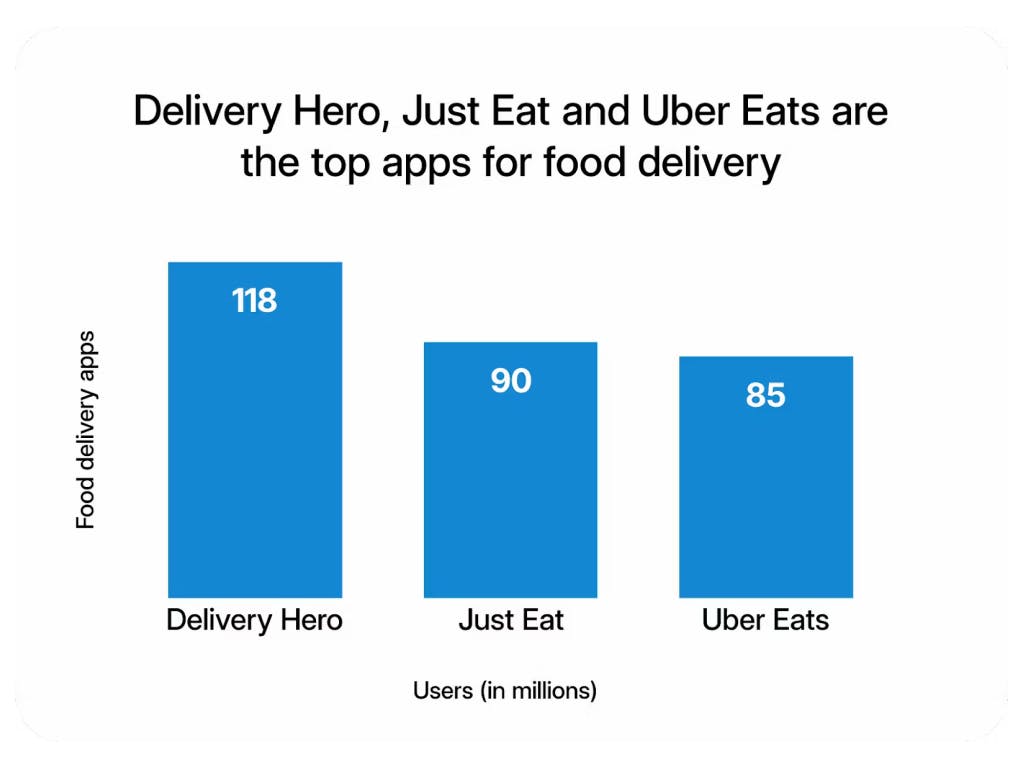
The profitability of delivery services is still a challenge for restaurants (McKinsey & Company)
- Delivery platforms typically charge restaurants between 15% and 30% of the price of a meal.
- In addition to commissions to restaurants, other revenue streams for delivery platforms include delivery fees to customers (typically $2 to $5 per order), customer service fees (up to 15%), and in-app advertising.
Food delivery vs. dine-in statistics
Half of all meals eaten away from home do not take place in restaurants (Kantar)
- Looking at lunches and dinners taken away from home (OOH), 22% of meals are picked up, 31% are delivered, and 47% are taken in restaurants. This means that 53% of out-of-home meals take place outside of restaurants (what Kantar calls "dining out at home").
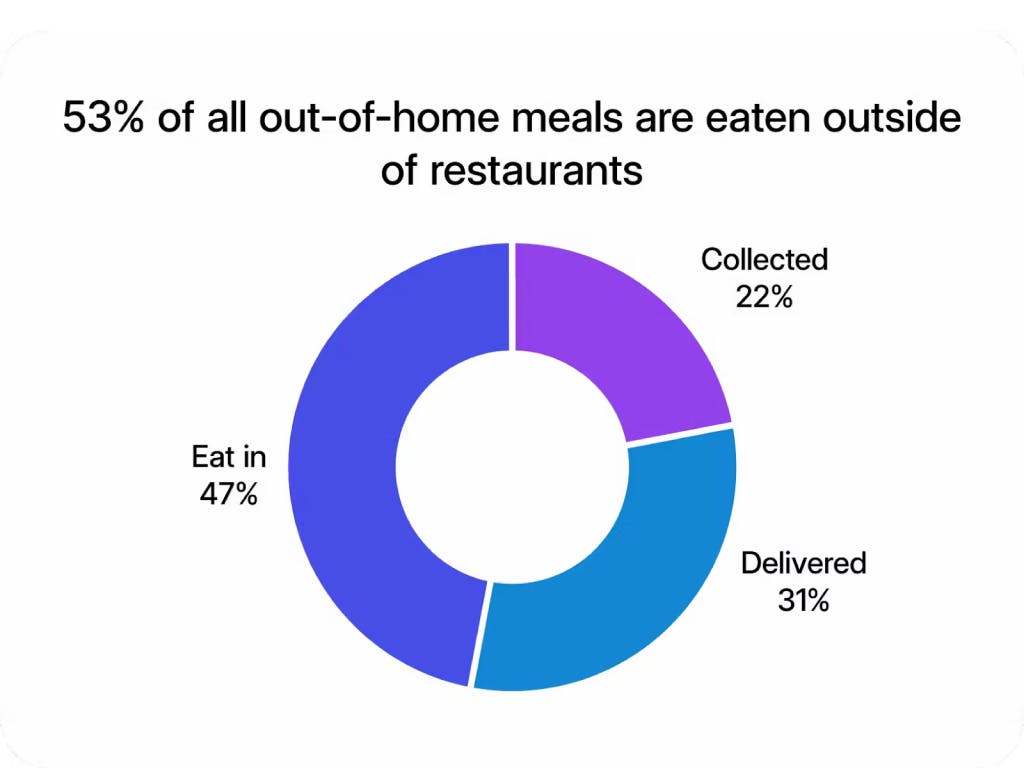
- In Asia, consumers prefer delivery (36% of meals) compared to eating at restaurants (34%) and picking up meals (30%).
- In Latin America, both eating at restaurants and delivery each represent 39% of out-of-home food service occasions, while meal pickup accounts for 22%.
- In Europe, the ratio is not as balanced. 59% of out-of-home meals take place at a restaurant, compared to delivery (21%) and pickup (20%).
A closer look at the UK food delivery market
Friday, Saturday, and Sunday are the most popular days to order delivery in the UK (Otter)
- People across the UK enjoy ordering in during the weekend. Sunday is the busiest day for deliveries (16.5% of all orders), closely followed by Saturday (16.4%) and Friday (16.3%).
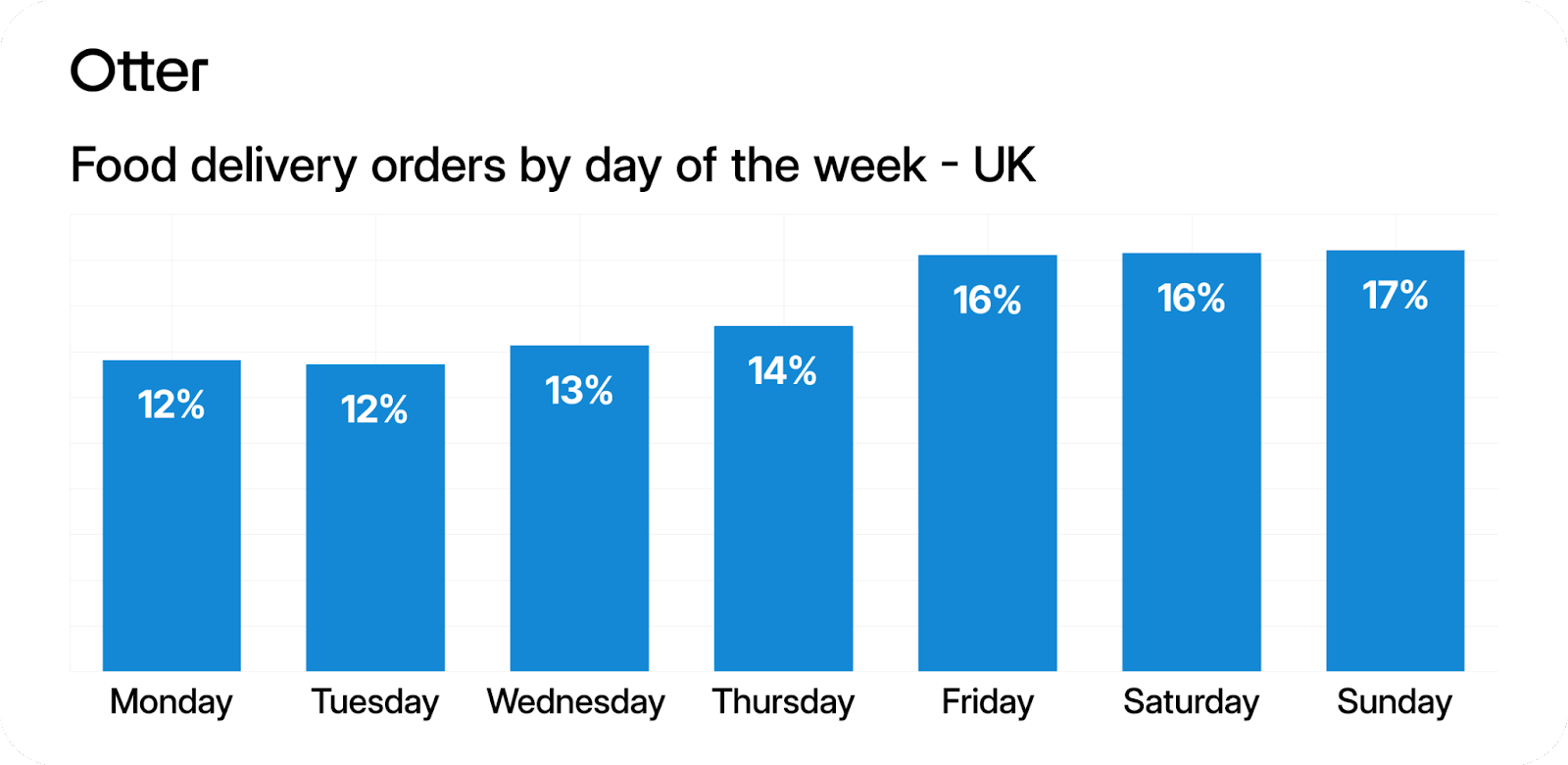
- Nighttime is the most popular time to order food delivery, with the 7 to 8 p.m. slot taking the lead.
- The busiest day-time combination for food delivery happens on Friday between 7 and 8 p.m.
- New Year's Day was the busiest day ever for food deliveries in 2022.
Dinner rules over any other meal when ordering delivery in the UK (Otter)
- Dinner is the most popular meal when it comes to delivery, with half of orders received after 6 p.m. (50%). Lunch comes in second (22%), closely followed by the afternoon time (19%).
- The average person in the UK spends 21.29 per delivery order, but is willing to spend a little more at the weekend. A look at the average spend per meal shows greater differences. People spend more later in the day, while breakfast and lunch stay under 20.
- While the number of delivery orders placed during the late night is low, Brits are willing to go all out at this time. People spend more during the 5 to 6 a.m. slot than any other (£27.16).
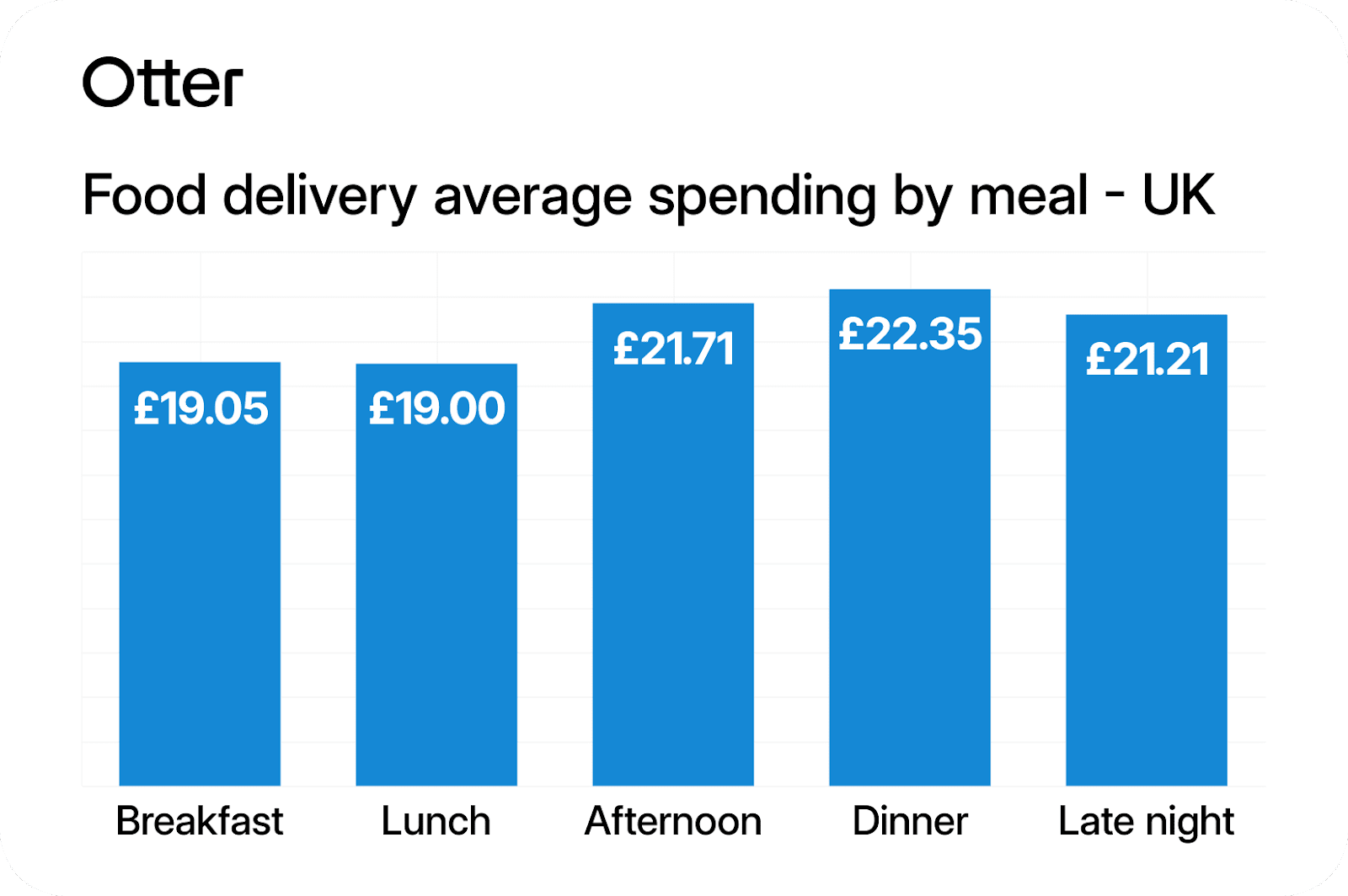
Brits favourite cravings unveiled: Indian and burgers top the list (Otter)
- Indian is the most ordered delivery food in the UK, followed by world-favourites burgers and pizzas. Alcohol is in fourth place, following a surge in sales due to new ordering patterns triggered by lockdown.
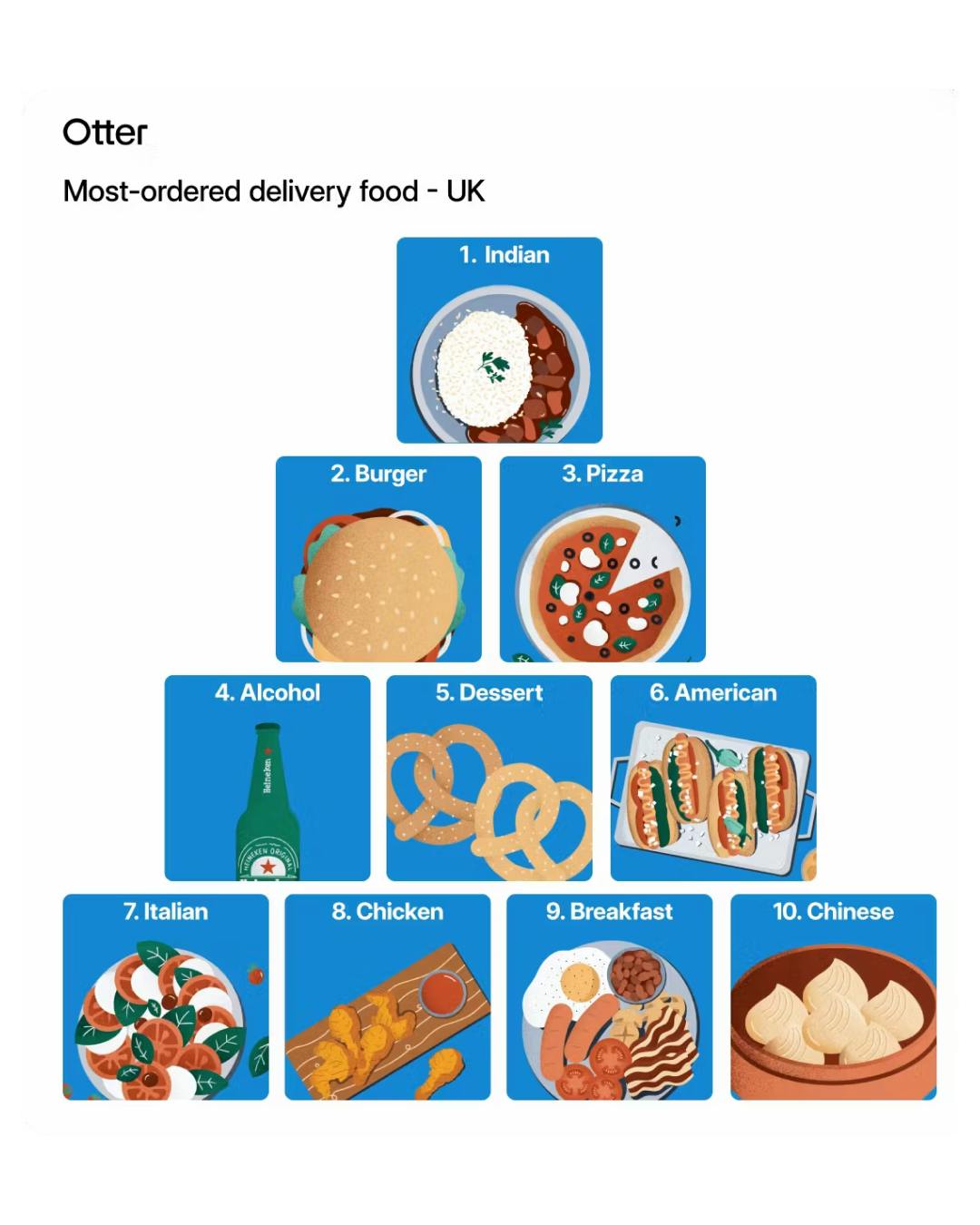
- Indian is the most popular cuisine for deliveries in most regions of the UK. Northern Ireland and the North East (England) prefer pizza, while the North West (England) and South East (England) prefer burgers.
So, now that we know delivery isn't going anywhere, how can your restaurant stay ahead of the curve?
As the restaurant industry continues to evolve, Otter will innovate alongside our tens of thousands of restaurant partners to ensure that we are helping restaurants improve their operations so they can get back to doing what they love feeding people and keeping them happy.
